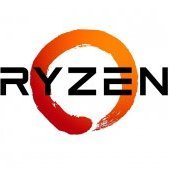Leaderboard
Popular Content
Showing content with the highest reputation on 03/23/17 in all areas
-
I feel like I should start with a disclaimer... this is my current personal opinion, it comes with no warranty or guarantee. YMMV. etc. etc. Typically what people mean is "don't expose unRAID to the Internet". It is designed for use in a "friendly" network, and doesn't have things like password lockouts or a firewall. The WebUI, SSH, FTP, SMB would be examples of things not to expose to the net. But if you are comfortable running Plex on Windows and exposing that to the Internet, then it shouldn't be any riskier to do the same on unRAID (preferably using Docker). Same with nginx, openvpn, etc. (using non-standard ports when possible) I am pretty sure that the main security scares people have had are because they put their server in the DMZ or otherwise exposed it to the Internet. That and having another computer on their network get hit with ransomware. I think your ideas for securing unRAID are spot on: do not expose to the Internet assign strong passwords to root and all users use read only shares when possible keep unRAID, all plugins, and all dockers current To that I would add: use dockers rather than plugins whenever possible (install the Community Applications plugin to help find apps to install) if exposing dockers or VMs to the Internet, use non-standard ports when possible install the Tips and Tweaks plugin so you can disable the built-in ftp and telnet servers (unfortunately, these are difficult to disable without the plugin) install the Fix Common Problems plugin because it will notify you of repeated password failures (and many other potential problems) consider installing the Ransomware Protection plugin, which makes your shares readonly if one of the bait files is deleted/modified maintain backups that cannot be affected by ransomware do not use the built-in Firefox browser if you can avoid it keep all other computers on your network up to date with security patches / antivirus keep your router current as well And not really security related but worth mentioning: always use a UPS. It will save you a lot of headaches.3 points
-
Like any computer system it can be more or less "secure". Depends on what you want secured. Note: please only use latest release. Note2: next minor release (6.4) includes https support for accessing server.2 points
-
Application Name: TVHeadend Application Site: https://tvheadend.org/ Docker Hub: https://hub.docker.com/r/linuxserver/tvheadend/ Github: https://github.com/linuxserver/docker-tvheadend Please post any questions/issues relating to this docker you have in this thread. **Notes** - Please take a look at the readme's about how the tags work for this docker image. Migration from tobben's TVHeadend docker should work fine but you may need to reconfigure xmltv If you are not using Unraid (and you should be!) then please do not post here, instead head to linuxserver.io to see how to get support.1 point
-
Application Name: Deluge Application Site: http://deluge-torrent.org/ Docker Hub: https://hub.docker.com/r/linuxserver/deluge/ Github: https://github.com/linuxserver/docker-deluge Please post any questions/issues relating to this docker you have in this thread. If you are not using Unraid (and you should be!) then please do not post here, instead head to linuxserver.io to see how to get support1 point
-
Application Name: OpenVPN-AS Application Site: https://openvpn.net/index.php/access-server/overview.html Docker Hub: https://hub.docker.com/r/linuxserver/openvpn-as/ Github: https://github.com/linuxserver/docker-openvpnas Please post any questions/issues relating to this docker you have in this thread. If you are not using Unraid (and you should be!) then please do not post here, instead head to linuxserver.io to see how to get support.1 point
-
As off March 13, 2021 this image has been deprecated, read the notice here https://info.linuxserver.io/issues/2021-03-13-rutorrent/ Application Name: Rutorrent Application Site: https://github.com/Novik/ruTorrent/ Docker Hub: https://hub.docker.com/r/linuxserver/rutorrent/ Github: https://github.com/linuxserver/docker-rutorrent Please post any questions/issues relating to this docker you have in this thread. If you are not using Unraid (and you should be!) then please do not post here, instead head to linuxserver.io to see how to get support. Rtorrent has a comprehensive list of options and this should be the first port of call for configuration option/issues https://github.com/rakshasa/rtorrent/wiki/rTorrent-0.9-Comprehensive-Command-list-(WIP)#comprehensive-list-of-rtorrent-09-commands **Attention - Latest Update - Image Rewrite** 11/12/2018 We have rewrite to our newest image, so much more lightweight, supports theme folders, fixes a known shutdown bug. Please make sure you backup your appdata before updating in case of any issues. IMPORTANT 23/08/2018 If after updating the image you see message in the webui about rtorrent connection etc, you will need to delete or comment out the following 2 lines in /config/rtorrent/rtorrent.rc. You should comment or delete them regardless if they are set to yes or no. use_udp_trackers = yes peer_exchange = yes restart the container and the problem should be resolved.1 point
-
Application Name: davos Application Site: https://github.com/linuxserver/davos Docker Hub: https://hub.docker.com/r/linuxserver/davos/ Github: https://github.com/linuxserver/davos Please post any questions/issues relating to this docker you have in this thread. If you are not using Unraid (and you should be!) then please do not post here, instead head to linuxserver.io to see how to get support1 point
-
As off March 1, 2022 this image has been deprecated, read the notice here https://info.linuxserver.io/issues/2022-03-01-couchpotato/ Application Name: CouchPotato Application Site: https://couchpota.to/ Docker Hub: https://hub.docker.com/r/linuxserver/couchpotato/ Github: https://github.com/linuxserver/docker-couchpotato Please post any questions/issues relating to this docker you have in this thread. If you are not using Unraid (and you should be!) then please do not post here, instead head to linuxserver.io to see how to get support1 point
-
Application Name: Organizr Application Site: https://github.com/causefx/Organizr Docker Hub: https://hub.docker.com/r/lsiocommunity/organizr/ Github: https://github.com/linuxserver/docker-organizr Please post any questions/issues relating to this docker you have in this thread. If you are not using Unraid (and you should be!) then please do not post here, instead head to linuxserver.io to see how to get support.1 point
-
Application Name: SickRage Application Site: https://github.com/SickRage/SickRage Docker Hub: https://hub.docker.com/r/linuxserver/sickrage/ Github: https://github.com/linuxserver/docker-sickrage Please post any questions/issues relating to this docker you have in this thread. If you are not using Unraid (and you should be!) then please do not post here, instead head to linuxserver.io to see how to get support. Changes to the Sickrage Container.1 point
-
That will always happen, they are bots. No actual morons required.1 point
-
Everything looks good, tunables are not optimal but that wouldn't explain the slowdown, unless maybe it coincided with a new unRAID release, still you can try changing to these and run another check to see if it improves. Settings -> Disk Settings: md_num_stripes: 4096 md_sync_window: 2048 md_sync_thresh: 20001 point
-
I had this EXACT issue and failed to find the root cause after 30 hours of troubleshooting. My problem pointed to a software issue since it happened to me on completely disparate hardware using the same disks. I built a new machine and mounted the RFS disks on snapraid for a stable mount. It wasn't a big deal since I needed to replace my ancient backup server. The problem vanished after I migrated to new disks (including cache) and formatted as XFS. I emailed Tom with suggestion that RFS be completely removed from support, but he is convinced that this is too extreme.1 point
-
I have several of those Ancient drives in my array. Slowly but surely weeding them out as my Data needs arise. For me if they have the Jumper in, I just left them in, but every new drive I've added I do not use the Jumper.1 point
-
BTW, I was able to confirm a few things about CPU numbering and physical layout from Anandtech and a few other sources: 1) The CPUs are numbered in roughly consecutive order around the rings. The numbering is determined by a correlated variable, so they might not be exactly as you'd expect, but there's no functional difference between 0,1,2,3,4,5 and 1,0,3,2,5,4 ordering. 2) Base layouts give you basically 1, 1.5, or 2 iterations of the ring structure. If there are 12 cores in a ring, there will be 3 versions with 12/18/24 physical cores. 3) The CPUs are always fused off in equal numbers from each ring. This includes half-rings. So the 22 core Xeon has two rings of 11 cores each. There's never a 10 and 12 core ring. 4) There is a small latency price to pay when crossing rings. Try to minimize cross-ring traffic. From a topological point of view, if you cross a ring, you generate 2x the bandwidth.1 point
-
Almost every one of the many motherboards I have purchased up until now has been Asus or Gigabyte. I did purchase an EVGA MB once and it had a lot of BIOS issues with USB that eventually got worked out but was a pain for several months. This is my first ASRock MB and I purchased it because it had the features I needed in a mini-ITX form factor without a lot of extra stuff I did not need. At $200 it was not cheap for a mini-ITX board. Many others in these forums were/are using the same board with success. I may think twice about going with ASRock in the future based on this experience. Right now, I just want to get it working again even if that means an RMA.1 point
-
Can you provide numbers in kWh? if you cut 100 kWh per month for example, it's about 20EUR/month (here in Latvia/EU), or about 240EUR per year, or about 1K in about four years.. then look at your systems price difference and you will get your math1 point
-
1 point
-
Now you're getting errors on disk3, is that the one you swapped cables? If yes that's a bad cable (or less likely a bad port).1 point
-
I would not let one reported uncorrect be a death sentence for this drive. I have a disk that developed one early in its life and the number has never increased. It is not a problem. It's really changes in attribute values more than absolute values that show a drive is failing.1 point
-
Disk7 dropped offline immediately after array start, power down, check cables, power back on, try to start the array, if still unmountable grab and post new diags.1 point
-
You can try to run this and check if a disk is performing below par.1 point
-
Seems like a pretty reasonable speed to me but I don't run any 7200 drives. We can't tell you anything else without more information of course. Tools - Diagnostics, post complete zip.1 point
-
Please update your plugins to 2017.03.23: ###2017.03.23 - Fix: mismatch short serial numbers - bug introduced in the last version - Fix: preclear not stopping on Windows browsers1 point
-
I still see the pictures, they are in this post: https://forums.lime-technology.com/topic/25692-unmenu-16-now-available-a-major-upgrade-in-appearance/?do=findComment&comment=245390 Can you see them there?1 point
-
1 point
-
1 point
-
We have a list of tested hardware here: http://lime-technology.com/wiki/index.php/UnRAID_6/Overview#Lime_Technology_Tested_Components You can also search the forums for other posts from folks using virtualization and GPU pass through for recommendations, but I think it'd be bad for us to make recommendations for hardware we haven't personally tested ourselves. There is also this community maintained spreadsheet of tested configurations that applies to QEMU/KVM/VFIO in general: https://docs.google.com/spreadsheets/d/1LnGpTrXalwGVNy0PWJDURhyxa3sgqkGXmvNCIvIMenk/edit#gid=0 In general, building a custom unRAID system can go one of two ways: you can go with recommendations from us and our community which are very likely to work or you can go off of hardware spec sheets and DIY the entire project. If you go with the latter, you always run the risk of being the first to jump in the water to test a new combination of hardware and software features, and thus be left out in the wind for a bit while issues get stamped out. In those scenarios, you have to do exactly what you did: create a post in the forum and include your diagnostics so we can get more information. From here, it's the waiting game. We rely on upstream projects like KVM/QEMU/VFIO to resolve these types of issues because the issues originate from their projects. If you were having a storage issue with your drives or controllers, we'd be able to do a lot more directly because we maintain that ourselves.1 point
-
You should contact @Squid and make a plugin for this for the Community Applications1 point
-
was just about to post a separate topic when i found this. very similar sounding, server locks up every two days or so. dockers down, can't access webgui. can log in with putty, but can't seem to issue any commands. have had to pull power, obviously not good but nothing else works. can i roll back to an older version of unraid? any issues doing that? EDIT: out of interest, i have two machines, one seems unaffected, however the one i'm referring to has had this issue a couple of weeks1 point
-
@gridrunner I do have the logo 'issue' but everything else runs just fine, so seems like it's just an oddity. and to answer my own question from earlier about not needing to change boot order every time you start the vm...I figured out you just need to remove the other boot options in the xml. So remove the vdisk, driver iso file, any dvdrom ect that were booting before your nvme drive and it'll go straight to the only thing left.1 point
-
The parity check ran for 12 hours, between 9:30 and 9:30. That's 4 hours per terabyte, which is too slow. It's normally 2 to 3 hours per terabyte, 2 or less for fast drives, and 3 for very slow drives. It's time to check the SMART reports for all of the drives, plus run a drive performance test using the disk_speed script. The syslog does not show any relevant errors at all. Instead of the syslog, we usually want the diagnostics, which includes the syslog plus all of the SMART reports and a lot more.1 point
-
I was able to solve this problem on my system. The issue was shared physical CPU cores. The solution is outlined here. Basically just restrict the Unraid OS to certain cores (In my case physical core 0/virtual core 0 & 6) append isolcpus=0,5 initrd=/bzroot Put this into the Syslinux.cfg file on your boot flash drive. Then give your virtual machine with the dedicated GPU some dedicated CPU cores (Physical not virtual) and set the vm emulation threads to run on a different core. <cputune> <vcpupin vcpu='0' cpuset='1'/> <vcpupin vcpu='1' cpuset='2'/> <vcpupin vcpu='2' cpuset='3'/> <vcpupin vcpu='3' cpuset='7'/> <vcpupin vcpu='4' cpuset='8'/> <vcpupin vcpu='5' cpuset='9'/> <emulatorpin cpuset='0,6'/> </cputune> And voila, audio desync solved.1 point
-
Thanks for this. I'm interested but cautious. I need to do some reading before I install it.1 point
-
I was running a parity sync and had an issue with one of my off-line drives which caused the web gui to stop responding. I found this post helpful in confirming that the parity check was still running. Thank you all. I anticipated not being able to access the gui for the duration of the sync, so I took the details from this thread and produced a bash script that replicates the information provided in the web gui: #!/bin/bash status=$(mdcmd status | sed -n 's/mdState=//p') size=$(mdcmd status | sed -n 's/mdResync=//p') pos=$(mdcmd status | sed -n 's/mdResyncPos=//p') dt=$(mdcmd status | sed -n 's/mdResyncDt=//p') db=$(mdcmd status | sed -n 's/mdResyncDb=//p') gbsize=$(awk "BEGIN{ printf \"%.0f\",$size * 1024 / 1000^3}") gbpos=$(awk "BEGIN{ printf \"%.0f\",$pos * 1024 / 1000^3}") progress=$(awk "BEGIN{ printf \"%.1f\",($pos / $size) * 100}") speed=$(awk "BEGIN{ printf \"%.1f\",($db/$dt) * 1024 / 1000^2}") finish=$(awk "BEGIN{ m=(($dt*(($size-$pos)/($db/100+1)))/100)/60 print int(m/60) \"h \" int(m%60) \"m\" }") echo "Status: $status" echo "Progress: $gbpos GB of $gbsize GB (${progress}%)" echo "Speed: $speed MB/sec" echo "Finish: $finish" You can create this from the console using nano or vi. I saved as /boot/syncstatus, and made executable with `chmod +x /boot/syncstatus` If you run this once it will output the current status: Status: STARTED Progress: 1101 GB of 4001 GB (27.5%) Speed: 138.3 MB/sec Finish: 5h 49m If you want the information to continually update then you can use the `watch` command: watch /boot/syncstatus This will print the sync information and refresh the information every 2 seconds. You can change the polling period using the -n option (`watch -n 10 /boot/syncstatus` for every 10 seconds).1 point
-
If you wanted to save a little bit of money you could buy a 2 port HBA + SAS expander to connect 16 drives for about half the price. That's what I've got in my server.1 point








